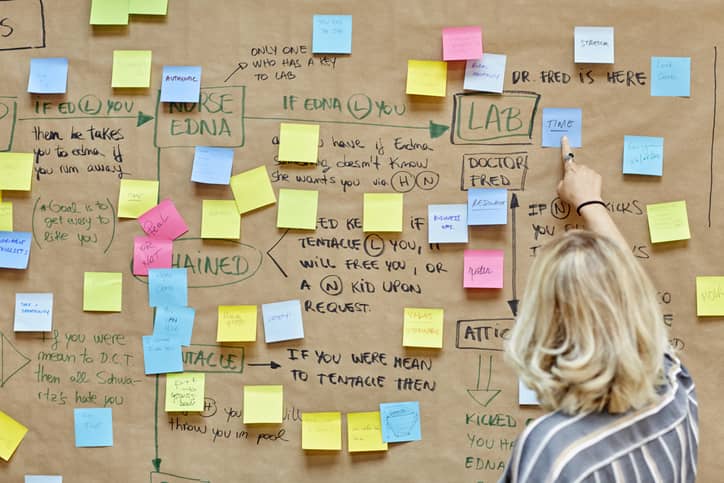 An important part of a quality improvement process is producing new ideas to solve problems. Six Sigma methodologies provide a technique to engage project teams and draw upon their expertise and knowledge to create problem-solving ideas and to organize these ideas into cohesive groups.
An important part of a quality improvement process is producing new ideas to solve problems. Six Sigma methodologies provide a technique to engage project teams and draw upon their expertise and knowledge to create problem-solving ideas and to organize these ideas into cohesive groups.
The first step in Six Sigma problem solving is to create an affinity diagram. This process draws on the traditional idea of brainstorming. Like brainstorming the affinity diagram is founded on the principle that ideas that are generated spontaneously by a group are better than ideas generated by individuals working alone.
Affinity Diagram
The affinity diagram applies the principles of brainstorming by generating a large quantity of ideas, withholding criticism, accepting even seemingly absurd ideas and improving ideas by combining them. This technique is used in the early phase of the define stage of the Six Sigma process to help achieve consensus in the project’s scope and objectives it can also identify problems and their root causes.
The process of creating an affinity diagram begins by stating the problem or objective in a simple sentence. It differs from brainstorming in that creating an affinity diagram requires a strong facilitator to direct the process and manage the amount of input allowed. An affinity diagram is created in three steps:
Record – Each team member is given a marker and post-it notes and asked to write down three issues that contribute to the problem. The goal is to get as many ideas as possible so all ideas are invited from the most general to the most specific no matter how outlandish the idea may seem. Each idea is recorded on a sticky note and all notes are displayed in a large work area for the entire team to see.
Arrange – After ideas are recorded related ideas are grouped together, and duplicate ideas are eliminated. Unlike traditional brainstorming this process takes place in silence. Categorizing ideas without speaking requires team members to focus on how the ideas relate to one another and how they are part of a larger pattern instead of focusing on creating a compelling argument why they are right.
Discuss – Once ideas have been placed into categories team members can talk out loud about patterns they see in the sampling of ideas. They can also discuss different views of how each idea should be classified. Once the grouping of ideas has been decided upon the team focuses on creating a heading for each group of ideas that describes the group.
Unlike the results of most Six Sigma processes, the ideas and category headings in the affinity diagram are the subjective beliefs of the project team and these ideas will require the support and validation of objective tools later in the process. However, when the goal is to focus a project team on identifying the root causes of a problem or helping them come to a consensus, the rigors of the process for creating an affinity diagram are highly effective. This simple process allows the facilitator to extract creative ideas from the team and to organize these ideas into groups of natural relationships.



